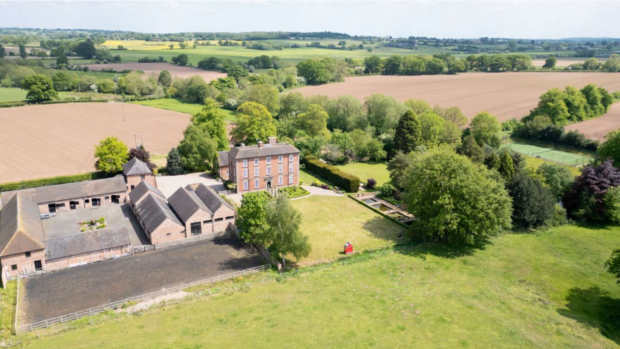The demand for equestrian property remains as high as ever with waiting lists of up to three years reported in certain areas of the country.
But if you think this means the market is at an all-time high, think again. With few exceptions, agents from across the country generally report steady levels of activity and stable prices. This is because a gap in the positions of buyers and vendors has made it hard to achieve buoyant sales.
“The property market generally has been like taking thousands of horses to water and, well, you know the rest,” jokes Zoe Napier of Fenn Wright. “The real problem has been the adjustment period from a good to a steady market.”
During this phase, which took place between the end of last year and the first half of this year, the expectations of vendors and buyers dramatically diverged. Purchasers became extremely selective and were bent on getting top value for their money, while vendors remained determined to achieve a premium over the guide price.
“Buyers are assuming that they can buy at any price. Sellers are, in general, over optimistic,” says Tony Mullucks of Mullucks Wells.
As a result, it can take an average of 12.1 viewings and eight weeks for a house to sell, according to independent research company Hometrack — by which time some vendors lose heart and take their home off the market. This is why just about every agent is chanting the mantra of correct pricing.
“Vendors need to be realistic in terms of what their properties are worth,” urges Edward Dyke of Humberts.
This is especially true in the case of problem properties, such as those blighted by pylons.
“Houses with major glitches such as planning issues or subject to loud road noise are proving more difficult to sell and are much more price sensitive than over the past few years,” says Belinda Hutchinson Smith of Savills West Midlands.
But even good homes must be priced accurately and this can be a thorny issue when people have invested heavily in setting up a tip-top yard and are reluctant to set a figure that, in their view, undersells the facilities.
“If vendors have spent a lot of money doing up a property to make it exactly as they want it to be, it may not meet prospective purchasers’ requirements. The over done-up property may not be worth what the vendors think it is, even if it has fulfilled all their aspirations,” warns Dyke.
A better strategy for sellers to recover the value of their investment is to set a price that will encourage competition among buyers.
“If you quote too high a price, buyers won’t even look at the property,” says Kate Berkeley of Savills Cirencester. “There is no way of achieving any price, if no one comes to look at your house.”
Breaking chains on either side of the sale process have also affected the market.
“In the first six months of the year there were a large number of potential purchasers, but their ability to proceed was poor because they had a house to sell that wasn’t yet on the market,” explains Napier, whose top tip for buyers is to put their existing home up for sale before starting to look for a new one.
Sellers are showing a marked preference for what estate agents call “proceedable” purchasers — people who either have cash or a firm offer on their own house. Buyers, for their part, fret about selling their own home too early, in case they don’t complete their purchase by the time they have to move out.
Over the past month, however, this stalemate appears to be easing. Buyers are starting to put their houses on the market long before making an offer.
“The message ‘please get some activity on your home before starting to look’ seems at last to be sinking in,” says Sue Maxwell Smith of Pegasus Equestrian Properties.
And sellers have an increasingly realistic view of prices, especially when offers come from cash-in-hand buyers.
“In the past few weeks, we have seen a realignment of expectations and vendors are realising that they are selling into a harder market,” says Robert Fanshawe of Knight Frank.
Several other factors are helping to boost activity levels.
“Earlier in the year, buyers lacked confidence and were reticent,” says Savill’s Berkeley, “but the recent drop in interest rates and increased selection of quality properties launched on to the market has provided a catalyst for a definite improvement in buyers’ sentiments. This is a sure sign of buyers and sellers being no longer fearful of the predicted boom/bust scenario.”
Most agents expect the market to trade briskly between now and Christmas, with a slightly higher number of sales than in the first half of the year. The rise in transaction numbers, however, is highly unlikely to push prices up at the same mind-boggling rate of the past because buyers continue to be cautious.
“Prices will remain static,” says Mullucks.
In this price-sensitive market, agents disagree over what kind of property will achieve the best figures. Dyke, from Humberts, thinks that homes with scope for improvement stand the best chances. Threadgill thinks that smaller properties will be more sought after — “the smaller, the better,” he says — while Berkeley believes good-sized homes are winners.
But they all agree that houses with a good yard, good location and enough land will sell more easily. As long as the price is right, of course.
|
||
 |
||


 Get up to 19 issues FREE
Get up to 19 issues FREE TO SUBSCRIBE
TO SUBSCRIBE 


